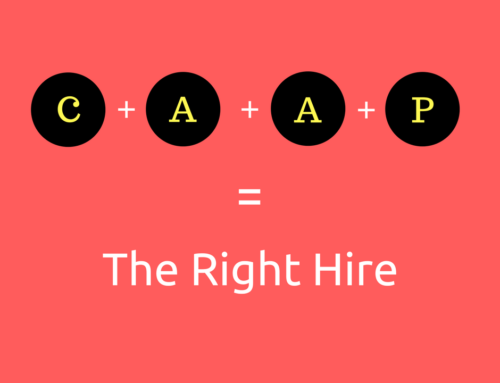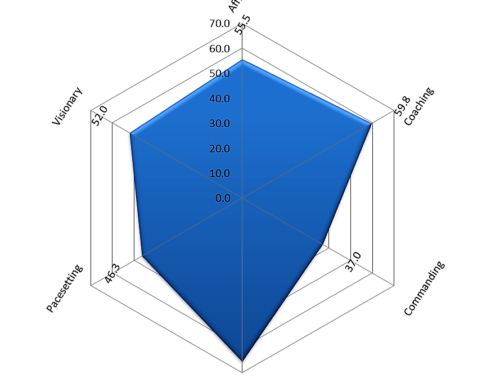It’s that time of the year again when performance appraisals are done, budgets are set and strategies are put in place.
This is the time of the year when you identify the weakest links in your team and identify the individuals who have not performed up-to-mark and decide what to do with them.
However, not all of us are comfortable confronting employees about their poor work performance, and not all of us are experts at conducting performance reviews.
And to add fuel to the fire, not all organisations provide the required training for leaders and managers to conduct proper performance reviews with their employees.
Many of us, as leaders and managers, often struggle with what to say, how to say it and what to do when it comes to performance reviews, especially with an under-performing team member.
So how should you approach the performance review of an under-performer and what can you do to ensure the performance review is effective and productive?
Here are some tips for you as a leader or a manager on how to approach a performance review:
Self-Reflection
Before you jump to the conclusion that the employee is a poor performer, you need to do a little self-reflection.
As Leaders and Managers, sometimes we get so caught up with our own objectives and agendas that we overlook the fact that disengaged employees and poor performers may be the direct result of our own actions (or inaction).
“As Leaders and Managers, sometimes we get so caught up with our own objectives and agendas that we overlook the fact that disengaged employees and poor performers may be the direct result of our own actions (or inaction).”
Ask yourself these questions:
- Do they have the necessary resources (tools, money, time, skills) to do their jobs?
- Have I provided them with the required guidance to do their jobs?
- Have I given them proper instructions for them to get their jobs done?
- Have I clearly communicated my expectations and objectives to them so that they understand what they need to do?
- What have I not yet communicated to them so they are able to get their jobs done efficiently?
- What might I have done to cause the employee to under-perform?
We need to accept the fact that not all under-performers are incompetent or disinterested in their jobs. We need to accept the fact that some employees under-perform because we as leaders and managers fail to provide them with the right environment, resources and the necessary support and guidance for them to excel. Many times, employees do not perform up to expectations due largely to our neglect and oversight.
Begin a Dialog
Start a one-on-one dialog with the employee in question. Your dialog should be focused on the possibilities and solutions rather than on the problems and the past.
Use the following STAGES* model to guide your dialog with your employee during the performance review:
-
S – Set the Stage
T – Be specific about the Topic
A – Ask for opinion
G – Give evaluation
E – Establish action plan
S – Set review date
First, set the stage for the dialog with the employee.
This is the time for you as the leader or the manager to outline and explain why this dialog is taking place and what the employee can expect from this session with you. This is your opportunity to establish the correct rapport and to create an appropriate climate for the dialog.
Second, be specific about the topic you want to discuss with the employee.
Clearly identify the topic for discussion and ensure the employee fully understands what you will be discussing. Avoid addressing too many topics or subjects during a single dialog. Be focused. It is best to focus on one topic at a time.
Third, ask the employee for his/her opinion.
Here you may ask for the employee’s self-evaluation or self-assessment of the issue or topic you are discussing with him/her. If this is a performance issue, ask for the employee’s self-assessment of his/her own performance in that area.
Fourth, give your evaluation of the employee’s performance.
This is when you provide the employee with your honest evaluation of his/her job performance. Remember to stick to the specific subject/topic/issue that both of you had agreed to at the beginning of the session. Do not digress. Focus on possibilities and solutions – not problems and the past. Remember, the aim here is to get the employee to move forward and to improve. So the focus should be on the options and possibilities.
Fifth, establish an action plan.
Agree on an action plan with the employee. It is important that the employee agrees with and is fully committed to the action plan. Ensure that the action plan is reasonable and actionable, so that the employee is able to work on it and make progress towards improvement.
Finally, set a review date.
Again, it is important that the employee agrees to the timeline and the review date. The review date should not be too far off into the future, nor should it be too soon that you do not allow sufficient time for the employee to take reasonable positive actions to make progress.
Review Regularly
Once the performance review is done, you need to follow-up regularly to ensure that the action plans you have agreed upon together with the employee is executed and done as agreed. Schedule regular mini-reviews between major review milestones.
One of the biggest mistakes most managers and leaders make is to put off consistent, regular reviews. Doing a review once a year or once every six months is not sufficient when managing an under-performer.
“One of the biggest mistakes most managers and leaders make is to put off consistent, regular reviews. Doing a review once a year or once every six months is not sufficient when managing an under-performer”
Consistent, regular reviews to ensure the employee is making positive progress and that the employee is taking concrete actions is extremely important if you want to see measurable and tangible improvements in performance.
Performance reviews need not be the dreaded year-end exercise leaders and managers have to go through with their employees. When approached and done correctly with the right attitudes, performance reviews can be a very powerful tool to motivate your employees and to re-kindle their passion for their work.
Share this article with your friends and colleagues!
*The Manager’s Coaching Toolkit by Dr. David Allamby
About the Author
STEVEN LOCK is a Speaker, Trainer, Author and a Leadership Coach. Steven brings with him two decades of corporate experience.
Steven is passionate about helping organisations transform their teams into high performing teams. He does that by first helping organisations identify and hire the right people, and then training their leaders and managers on how to manage and lead their people to achieve peak performance consistently.
He is the developer of The CAAP® High Performance Model. This model focuses on Culture (cultural fit), Attitude, Aptitude and Personality dimensions of their employees and job candidates. It is a highly practical, effective and proven approach. Steven believes that for organizations to be truly successful and perform at their highest levels, they need to shift their mind-sets to having the RIGHT people on-board – and not necessarily the best or the brightest.
Steven is the Author of two books:
• “Hiring for Performance: The CAAP® Model to Hiring and Building High-Performance Teams.”
• “The Right Talent: The Agility-Focused Interviewing Approach™ to Hiring the Right Candidate Every Time.”
He is also the developer of The Leadership STYLE Report™ that is based on Dr. Daniel Goleman’s research on leadership styles.
Steven has been featured on MediaCorp’s live radio show The Breakfast Club on 938FM, and has contributed numerous articles to Singapore Business Review, ST Recruit, SHRI Human Capital and other publications. His comments on Team Collaboration was quoted in the Spring 2014 Edition of the Harvard Business Review OnPoint Magazine.
Steven holds a Master of Business (Information Technology) from Curtin University of Technology, Western Australia. He is a certified DISC & MBTI® (Step I & II) practitioner.
Recently Steven was invited as a guest speaker to share about his CAAP(R) High Performance Model with over 600 delegates at the Vietnam HR Summit 2016 in Ho Chi Minh City.







Leave A Comment